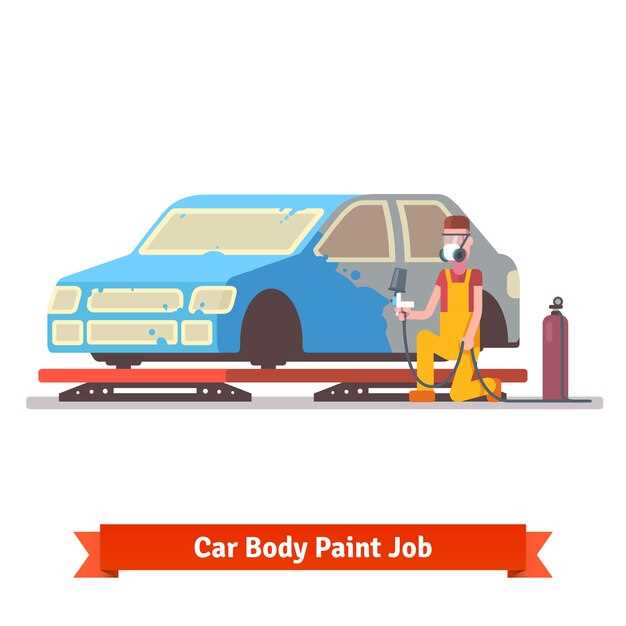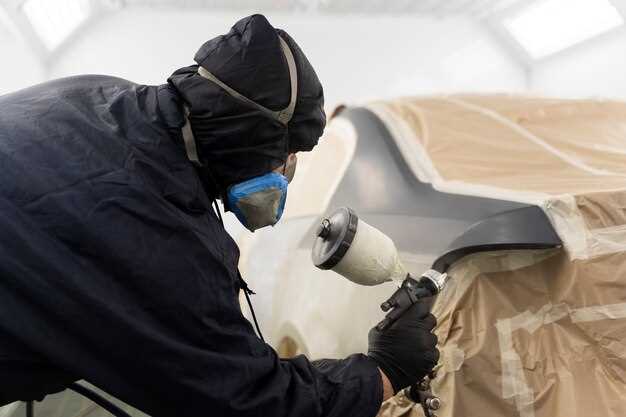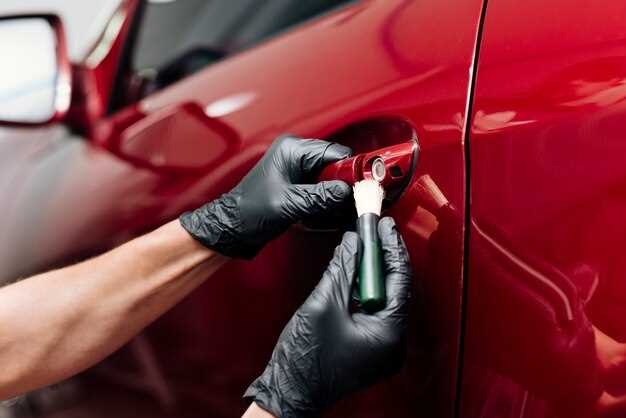
Maintaining the appearance of your vehicle is crucial, not only for aesthetic reasons but also for retaining its value. Dents, caused by various factors such as hail, minor collisions, or even shopping cart mishaps, can significantly detract from the look of your car. Fortunately, there are effective methods for repairing these blemishes without the need for paint. This technique, often referred to as Paintless Dent Repair (PDR), has gained popularity due to its efficiency and cost-effectiveness.
Understanding the Basics of PDR is essential for anyone looking to restore their vehicle’s surface without the traditional repainting process. This method involves manipulating the metal back to its original shape from behind the panel, preserving the paint and the integrity of the vehicle’s finish. It’s a delicate process that requires skill and the right tools, making it beneficial to know what to expect if you choose to go this route.
Before diving into the specifics of PDR, it’s important to assess the type of damage your vehicle has sustained. Not all dents are suitable for repair using this method, and understanding the limitations can help you make an informed decision. Factors such as the size, depth, and location of the dent play a crucial role in determining the best approach for repair. In this article, we will explore the various aspects of dent repair without paint, providing you with the knowledge required to decide whether this technique is right for your vehicle.
Repairing Dents Without Paint: What You Should Know

Repairing dents without the need for repainting is a highly effective method, often referred to as Paintless Dent Repair (PDR). This technique is particularly popular among car owners due to its efficiency and cost-effectiveness. Understanding the process and its advantages can help you decide whether it’s the right approach for your vehicle.
PDR involves carefully massaging the metal back to its original shape using specialized tools. Technicians access the back of the panel to gently push the dent out, ensuring that the original paint remains intact. This is crucial because it preserves the vehicle’s finish and eliminates the need for a color match, which can be challenging with traditional repair methods.
One of the main advantages of PDR is that it is typically quicker than conventional bodywork. Most dent repairs can be completed within a few hours, allowing you to get back on the road sooner. Additionally, PDR is often less expensive than traditional painting and bodywork options, making it a budget-friendly choice for minor dents and dings.
However, it’s important to note that not all dents can be repaired using this method. Dents that are too deep, large, or located on certain parts of the vehicle may require traditional repair techniques. Moreover, if the paint is cracked or damaged, PDR may not be viable.
When considering PDR, seeking out a qualified technician is essential. Look for professionals with experience and positive customer reviews to ensure quality results. A trained technician will assess the damage and advise you on whether PDR is suitable for your specific situation.
In conclusion, repairing dents without paint is a practical option for maintaining the appearance and value of your vehicle. With its advantages of time efficiency and cost savings, it is worth considering for minor damages. Always consult with a reputable service provider to explore your repair options and achieve the best possible outcome.
Understanding the PDR Technique and Its Benefits
Paintless Dent Repair (PDR) is a specialized method for removing minor dents and dings from a vehicle’s body without the need for repainting. This innovative technique has gained popularity due to its efficiency and effectiveness. Here’s an overview of how PDR works and its advantages.
The PDR process involves the following key steps:
- Assessment: A technician examines the damaged area to determine the type and extent of the dent.
- Access: The technician carefully gains access to the back of the panel where the dent is located, often through existing holes or by removing some components.
- Application of Pressure: Using specialized tools, the technician applies pressure to push the dent out from behind, restoring the panel to its original shape.
- Final Inspection: Once the dent is removed, the technician inspects the area to ensure a seamless finish and performs any necessary touch-ups.
The benefits of using the PDR technique include:
- Cost-Effective: PDR typically costs less than traditional repair methods since it eliminates the need for painting and extensive bodywork.
- Time-Saving: Repairs can often be completed in a matter of hours rather than days, allowing customers to get back on the road quickly.
- Preservation of Original Paint: Since PDR does not involve repainting, the vehicle’s factory finish is preserved, which can help maintain its value.
- Environmentally Friendly: PDR is a greener option as it reduces waste from paint fumes and materials.
- Versatility: This technique can effectively repair various types of dents, including those caused by hail, minor collisions, or door dings.
In conclusion, Paintless Dent Repair is a highly effective solution for minor damage. With its array of benefits, it stands out as a preferred choice for vehicle owners looking for efficient and economical repair options.
Tools and Materials Needed for Dent Removal
For successful dent removal without paint, it is essential to have the right tools and materials on hand. These items will help you effectively address various types of dents and ensure a professional finish.
1. PDR Rods: Paintless Dent Repair (PDR) rods are thin, strong tools used to push dents from behind the panel. They come in various shapes and sizes, allowing for precise manipulation of the damaged area.
2. Glue Gun and Glue Tabs: A hot glue gun is used for attaching special glue tabs to the dented area. Once the glue has set, you can pull the tab to gradually remove the dent, utilizing leverage to reshape the metal without causing additional damage.
3. Hammer and Knockdown Tool: A flat hammer is ideal for tapping out small dents gently. The knockdown tool is used to smooth out high spots created during this process, ensuring an even surface after the dent has been removed.
4. Suction Cups: Suction cups can be effective for larger dents. When placed securely on the surface, they can create enough pulling power to lift the dent out if used correctly.
5. Soft Cloth or Towel: Protect your car’s surface by using a soft cloth or towel while working. It helps prevent scratches and damage to the paint during the repair process.
6. Light Source: A bright LED light or a reflection board can help you see the dent clearly. Proper lighting allows for better assessment of the damage and ensures accurate repositioning of the metal.
7. Safety Gear: Protective eyewear and gloves should always be worn during the dent removal process to safeguard against any debris or tools that may cause injury.
Having the proper tools and materials readily available not only enhances the efficiency of the dent removal process but also contributes to achieving the best results without compromising the vehicle’s finish.
Step-by-Step Guide to Fixing Dents Yourself

Repairing dents in your vehicle can save you time and money. Below is a detailed guide to help you fix minor dents easily, using common household tools and materials.
Before starting, ensure you have the following tools and materials:
| Tools | Materials |
|---|---|
| Hair dryer or heat gun | Aluminum foil |
| Dry ice or compressed air | Protective gloves |
| Plastic putty knife | Car wax (optional) |
Step 1: Assess the Damage
Inspect the dent to determine its size and depth. If it’s shallow and not creased, it might be a candidate for DIY repair.
Step 2: Heat the Dent
Use a hair dryer or heat gun to warm the dented area. Hold the device about 6 inches away to avoid damaging the paint. Heat the area for about 30 seconds to one minute until it’s warm to the touch.
Step 3: Apply Aluminum Foil
Cut a piece of aluminum foil large enough to cover the dent area. This will help protect the paint from direct contact with dry ice.
Step 4: Use Dry Ice or Compressed Air
If using dry ice, wear gloves to prevent frostbite. Place the dry ice on the dent covered by aluminum foil. If using compressed air, turn the can upside down and spray directly on the heated area. The rapid cooling should cause the metal to contract and pop the dent out.
Step 5: Inspect the Damage
Once the dent pops out, remove the foil and inspect the area. If there are any imperfections, you can gently use the plastic putty knife to smooth them out.
Step 6: Optional Waxing
To restore shine and protect the surface, consider applying car wax to the repaired area. This will help blend the repair with surrounding paint and offer some protection.
By following these steps, you can effectively fix minor dents without paint, saving yourself both time and money while regaining the appearance of your vehicle.

